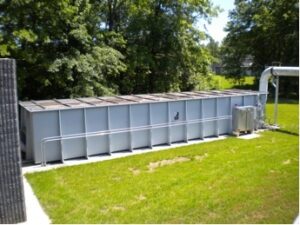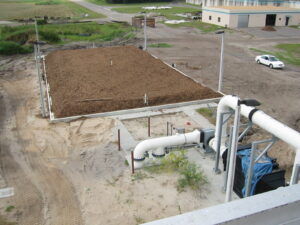What Are Biofilters and Why Are They Gaining Ground in Odor Control?
 More facilities today are looking for better ways to manage odors without relying heavily on chemicals. Wastewater treatment plants, food processors, and composting sites all face pressure from nearby communities and regulators. Many site managers are now asking a key question: what are biofilters, and can they actually solve long-standing odor problems?
More facilities today are looking for better ways to manage odors without relying heavily on chemicals. Wastewater treatment plants, food processors, and composting sites all face pressure from nearby communities and regulators. Many site managers are now asking a key question: what are biofilters, and can they actually solve long-standing odor problems?
At Webster Environmental Associates (WEA), we’ve worked with many types of odor control systems over the years. We’ve seen biofilters rise in popularity because they offer strong performance with less risk and lower long-term cost. In this article, we’ll explain what biofilters are, how they work, and why they’re a smart option for many sites.
Understanding What a Biofilter Is
A biofilter is a type of odor control system that uses natural microbes to treat air. Instead of using chemicals to neutralize odors, biofilters push odorous air through a bed of media—like compost, wood chips, or synthetic materials. Microorganisms grow on the surface of this media and break down odor-causing compounds in the air.
A typical biofilter has a few main parts. There’s the media bed, where the microbes live. There’s a system for pushing air through the media. Some setups also include an irrigation system to keep the media moist, which is important for the microbes to survive. Sensors or monitors can be added to check temperature, airflow, and other system conditions.
Biofilters are different from chemical scrubbers and carbon filters. Chemical scrubbers use liquids and chemical reactions to remove odors. Carbon filters use adsorption to trap odor compounds on the surface of carbon particles. While those systems can work well, they often need more maintenance and careful handling of chemicals. Biofilters rely on a natural process, which can be safer and simpler.
Why More Facilities Are Choosing Biofilters
There are a few clear reasons biofilters are being installed more often:
- Many sites want to reduce the amount of hazardous chemicals they store or use.
- Biofilters typically use less energy and have fewer moving parts than other systems.
- They are cost-effective over time because they don’t require expensive chemical refills.
- Permitting may be easier since biofilters are seen as more environmentally friendly.
Another benefit is public perception. When a facility chooses a biological treatment method, it shows a commitment to clean air and sustainable operations. This can help improve community relations and avoid complaints.
Where Biofilters Work Best
Biofiltration systems are a good fit for sites with steady airflow and consistent odor levels. This includes:
- Wastewater treatment plants dealing with odors from headworks, clarifiers, or solids handling.
- Food processing facilities with odor from raw materials or waste.
- Composting operations that need to treat air from turning piles, screening, or storage.
In each of these settings, biofilters help reduce complaints and meet air quality rules. They also help facility teams avoid the need for more complex chemical handling systems.
What Biofilters Need to Work Well
 Like any system, biofilters need the right setup to perform reliably. The microbes in the media bed need the right balance of moisture and pH to stay active. If the media dries out or becomes clogged, odor control drops off.
Like any system, biofilters need the right setup to perform reliably. The microbes in the media bed need the right balance of moisture and pH to stay active. If the media dries out or becomes clogged, odor control drops off.
The system must also be sized correctly for the amount of air and the strength of the odors. Too much air or too strong a load can overwhelm the microbes. Proper airflow is also key—air should move evenly through the media so all areas are treated the same.
Regular maintenance is important. Media must be checked and replaced on schedule. Airflow paths need to stay clear. Irrigation systems may need seasonal adjustments. Without these steps, even a good biofilter can underperform.
How WEA Designs and Supports Better Biofiltration
At WEA, we don’t use one-size-fits-all systems. Every facility is different. We start with testing to understand what’s in the air and where it’s coming from. We use that data to size the system and pick the right media.
We also offer air modeling and odor panel testing to make sure the system fits your site’s needs. Our team designs the layout, selects components, and helps during installation. We also provide training, checkups, and support to keep the system running well.
If something changes—like a new odor source or more airflow—we can help adjust the system. Our goal is always long-term performance, not just short-term fixes.
Let’s Talk About Your Odor Control Options
Biofilters offer a safe, affordable, and environmentally sound way to control odors. They’re not right for every site, but when they are, they work very well. At WEA, we’ve designed and maintained biofiltration systems for many different clients, and we’re ready to help you too.
If you’re thinking about installing a biofilter or upgrading your current odor control setup, contact Webster Environmental Associates. We’ll help you decide if a biofiltration system is the right fit for your operation.
